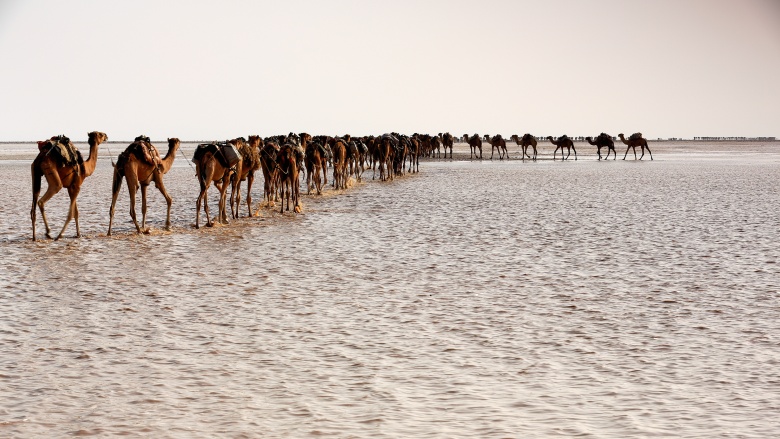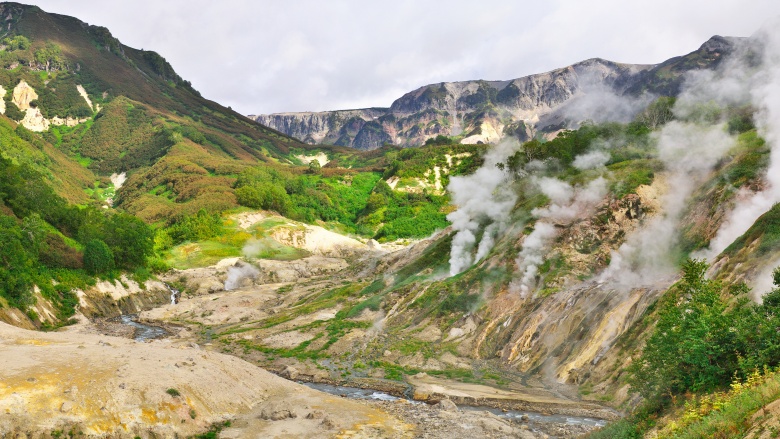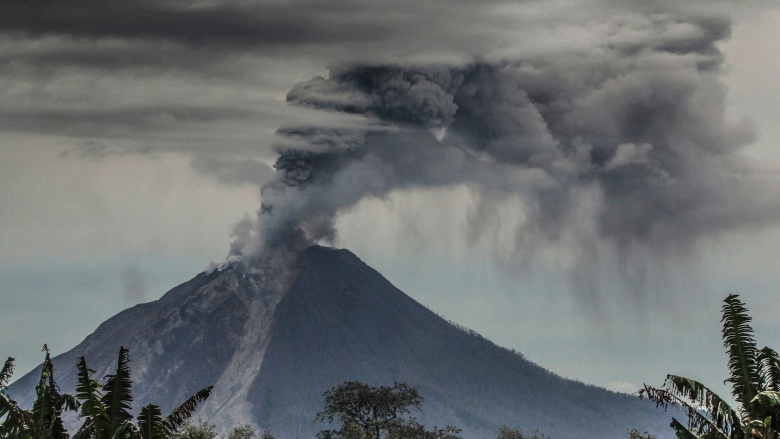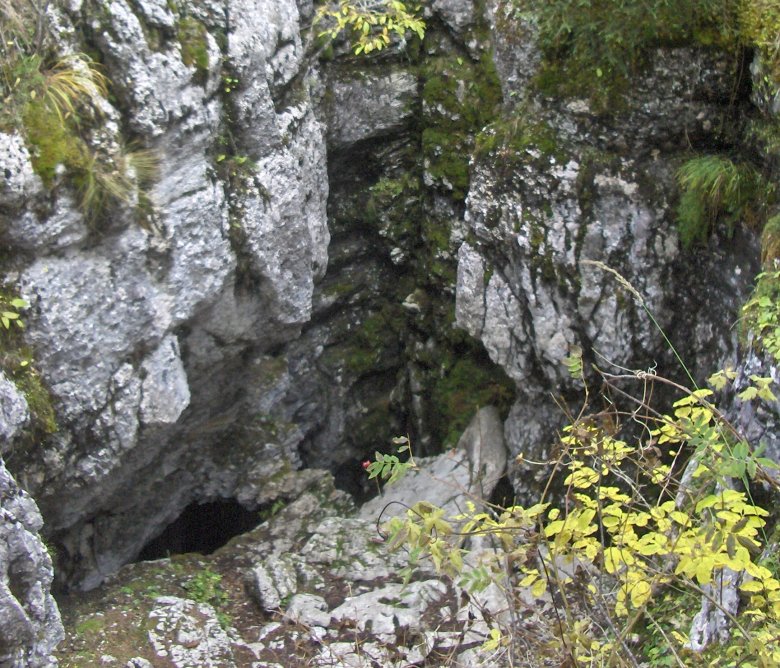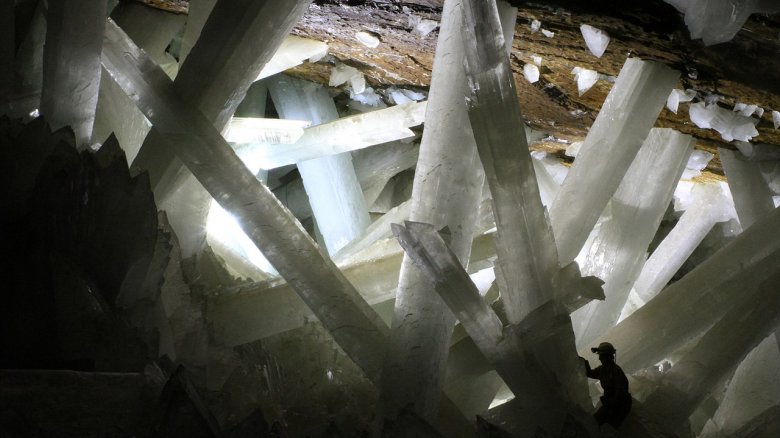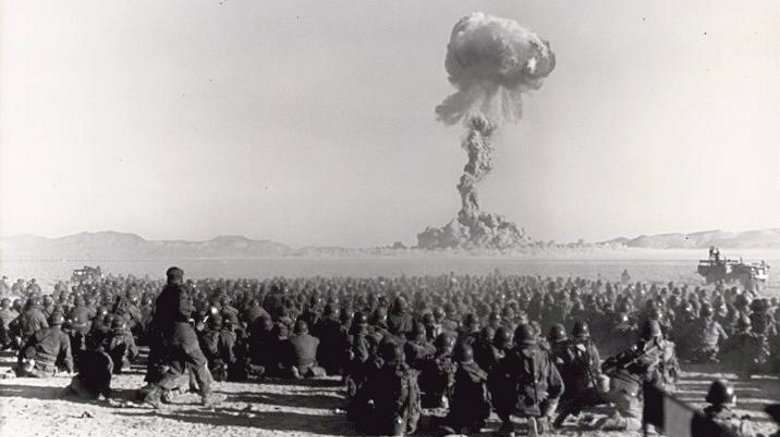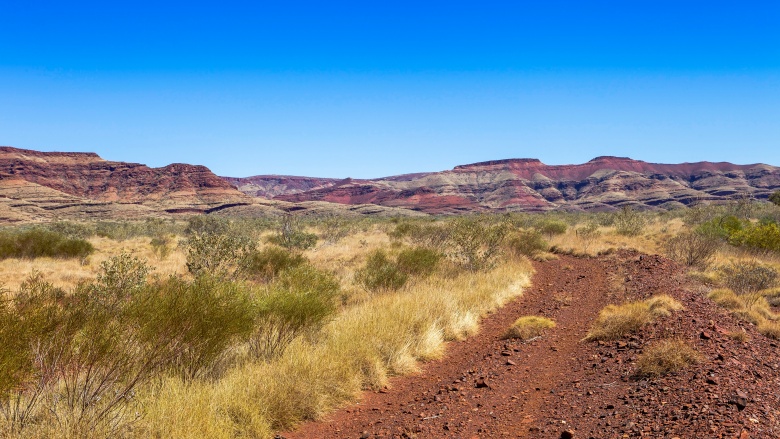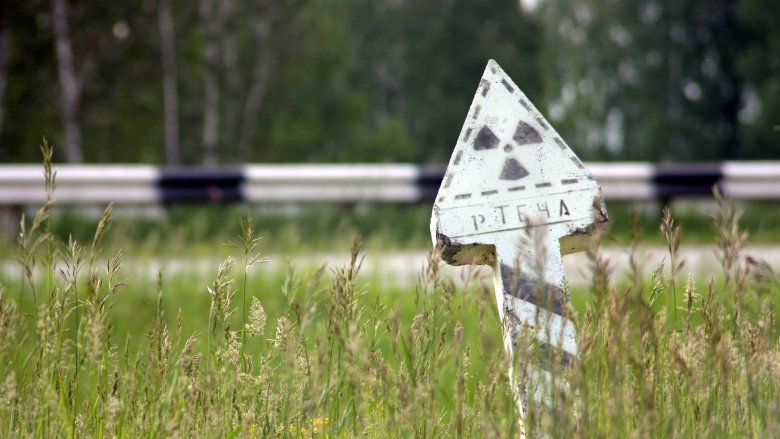Most Uninhabitable Places On Earth
Humans are hardy. Throughout our history, we have managed to survive through some pretty horrible situations and inhospitable environments. But nonetheless, there are some places on our planet today that even the most fearless person would want to think twice about settling down in. Whether they are uninhabitable due to their natural state or because of the awful things that humans do to our environment, these are some places you should never relocate to — or even visit.
Danakil Desert, Ethiopia
In northeastern Ethiopia and southern Eritrea, a vast desert of 100,000 square kilometers stretches as far as the eye can see. The fringes of the Danakil Desert are home to the Afar people, who rely heavily on the desert for their livelihood. Even though the region is among the hottest and most arid in the world — with temperatures reaching 145 degrees Fahrenheit in the sun — the Afar people continue to regularly trek through the desert terrain on their camel trains. It's a world filled with sand, salt, heat, and volcanic activity. Sulphurous hot springs, active lava beds, and salt lakes dot the landscape.
Why would anyone want to spend time in this harsh environment, let alone travel through it regularly? As with many "crazy" things humans do, it all comes down to money. The Afar people make their living by mining slabs of salt from the flats surrounding the Danakil Depression and loading the slabs onto camels to travel miles back to the nearest city to offload their precious cargo. If you're a geology buff and considering a trip to check out the unique region, you might want to hire a security force to get you there and back in one piece. Despite the forbidding nature of the Danakil, some of the locals definitely get salty about their rights to the area. In 2012, rebels attacked a group of tourists visiting the Erta Ale volcano in the Danakil Depression, killing five people, wounding seven, and abducting four others.
Valley of Death, Russia
No, we didn't mess up the title of this one. While Death Valley in the U.S. is arguably more famous, Russia's Valley of Death in the Kamchatka Peninsula is just as deadly for completely different reasons. Along the Geyser River and standing in the shadow of Kronotsky Volcano, the Valley of Geysers is a spectacular sight that lives up to its name. The area is essentially the Russian version of Yellowstone National Park, albeit much larger. The Valley of Geysers includes nearly 10,000 square kilometers or reserve land. For nearly a century, the area was off-limits to anyone but scientists and Russia's park rangers. But in 2011, the government began to allow tourist excursions into the valley, offering a rare glimpse of the gorgeous scenery, amazing geology, and the region's most mysterious—and dangerous—feature: the Valley of Death.
Discovered in 1975, the Valley of Death occupies only a small area within the larger Valley of Geysers, measuring just 2 kilometers long by 100-500 meters wide. The Valley of Death gets its name from the toxic gases that can be found clinging to the valley floor, and from the hundreds of animals that have died there from the fumes. Due to the volcanic nature of the area, gases including hydrogen sulphide, carbon dioxide, carbon sulphide and even cyanide flood the small valley, particularly on calm days with little wind. Animals that die there are found remarkably well-preserved, because the poisonous fumes even inhibit the growth of bacteria. In case you're wondering, yes, you can tour the area, but you might want to practice holding your breath or invest in an air tank. If you start to feel dizzy, weak, or get a headache, you should hightail it out of the area unless you want to become the Valley of Death's latest victim.
Mount Sinabung, Indonesia
On the island of Sumatra in Indonesia, a sleeping giant has woken up from a long nap, and he's not too happy about it. After lying dormant for nearly 400 years, Mount Sinabung became suddenly active when it erupted in August 2010. Another three years of quiet followed, but Sinabung came to life yet again in September 2013. Since then, the volcano has essentially been in an ongoing state of eruption, kicking off a cycle of terror for residents of the area.
Tens of thousands of people live within a few miles of the volcano, and each successive eruption has caused many of them to be evacuated and displaced. For many of these residents, no permanent solution to the situation has presented itself. When the latest eruption dies down, the people are sent back to their towns and homes, which are often covered with ash and volcanic mud. They begin the task of cleaning up their homes, only to be interrupted days or even mere hours later by yet another eruption from the unstable Sinabung.
While the constant cycle of evacuations and eruptions has been hard on residents, the death toll and impact on the local economy has been even worse. Crops have failed and farm animals perished because of the repeated ash falls, and dozens of people have died in the eruptions. On February 1, 2014, just one day after officials allowed residents back into their homes, Sinabung exploded in its most deadly eruption yet, killing 16 people. Another eruption in May 2016 claimed an additional seven lives. While we know there aren't a whole lot of options available for the people who live around Sinabung, given the recent history of the volcano, we'd strongly advise residents against rushing back home the next time the Indonesian government gives one of their dubious "all-clear" proclamations.
Ilha da Queimada Grande (Snake Island), Brazil
Ilha da Queimada Grande would probably never be your first choice for a vacation spot. Still, a determined ecotourist might try to put it on the itinerary — at least until they hear the local nickname for the island, and the reason behind the name. Known colloquially as Snake Island, the island was once part of the Brazilian mainland until rising sea levels isolated it from the continent 11,000 years ago. The rising waters also trapped the forbears of the golden lancehead viper on the island. The extremely venomous and critically endangered golden lanceheads have flourished on Snake Island, with around one snake per square meter.
That means that nearly every step you take on Snake Island might put you face-to-face with one of the world's most dangerous serpents. The fer-de-lance, a cousin of the golden lancehead, is responsible for the most snakebite deaths in Central and South America. The hemotoxic venom of this snake family causes your cells and tissue to literally melt and die, and the venom of Snake Island's golden lanceheads may be up to five times more potent than that of their mainland cousins.
Brazil's government definitely takes the threat of Snake Island seriously. A lighthouse was erected in 1909 to warn boaters away from the island. After the lighthouse keeper and his family were presumably killed by the snakes in the 1920s, the lighthouse was automated and the island made completely off-limits by the Brazilian Navy. That hasn't stopped all would-be visitors however. Wildlife smugglers poach live lanceheads from Snake Island for use in medical research, and a team of treasure hunters has been exploring the area for the Discovery Channel show Treasure Quest: Snake Island. So if your vacation goals include catching the deadliest snake in the world to resell on the black market, hunting for ancient Incan treasure, or killing an enemy in a particularly nasty way, Snake Island may be perfect for you. Otherwise, stay away — far, far away.
Gouffre Berger Cave, France
Throughout mankind's history, we have often turned to caves for our survival, but you wouldn't want to call this cave home. In France, the Gouffre Berger Cave was once considered the deepest in the world, and at more than 3,000 feet deep, it's still among the deepest. (The entrance is pictured above.) Many of the cave's impressive and beautiful passageways are near vertical, including the entrance, and require ropes and rigging to traverse down. Additionally, the Gouffre Berger is susceptible to flooding during heavy rains, which turn the cave into a death trap. Anyone in the cave when water levels rise is at risk of drowning. In the last decade or so, six people have died in the cave, five of them from flooding. On average, at least one rescue per year has to be performed in the cave. Unless you're an experienced caver and climber going with a large team of similarly experienced cavers, we'd recommend staying far away from the Gouffre Berger.
Cave of the Crystals, Mexico
Just like the Gouffre Berger, the Cave of the Crystals in Mexico is also beautiful but potentially deadly. Discovered by miners working in the Naica Mine in Chihuahua, Mexico, the Cave of the Crystals is normally filled with water, but was exposed by the draining power of water pumps used in the mine's operation. The cave chambers are packed with gigantic selenite crystals, some as large as 36 feet long and weighing 55 tons. Besides the very obvious hazard of a crystal the size of a Mack truck falling over and crushing you, the real danger presented by Cave of the Crystals might surprise you.
Unlike most other caves, which usually have a temperature between 50 and 70 degrees Fahrenheit, the climate inside Cave of the Crystals is hot enough to kill you. The Naica mine and the adjoining cave system are close to an underground magma chamber, which superheats the environment. The air temperature in the exposed Cave of the Crystals reaches 136 degrees Fahrenheit with 90-99 percent humidity. Humans can only spend 10 minutes in the cave without special equipment. Even with special cooling suits worn by researchers, that time is only extended to 30 minutes.
Anyone who overstays their welcome is courting a fine case of heat stroke or death. One unsanctioned worker tried to earn some fast cash by entering the cave alone to steal some of the beautiful crystals. Instead, all he earned was a toe-tag when he was overcome by the intense heat and died. If you want to check out Cave of the Crystals yourself, you can't. It's closed to the public. But don't despair: there are several awesome documentaries about the cave system, which will soon be the only way for anyone to experience the wonder of the Cave of the Crystals. After operations at the Naica Mine were suspended in late 2015, it's unlikely the mine's owners have continued to operate the expensive pumping equipment which keep the caves exposed and dry. This means that the caves may soon return to their original, submerged state, hiding them from our eyes forever.
Nevada National Security Site, USA
Previously known as the Nevada Test Site—and, before that, the Nevada Proving Grounds, pictured above—there's no question that the most uninhabitable place in the U.S. is the Nevada National Security Site. This stretch of Nevada desert, just 65 miles from Las Vegas, is where the U.S. has conducted the majority of its nuclear testing since the 1950s. Over the course of four decades, more than 900 nuclear detonation tests were carried out here. From atmospheric explosions to underground detonations, the U.S. government has positively pounded the environment around the NNSS with its nuclear program. And the damage isn't limited to the boundaries of the old proving grounds, either.
Radiation fallout from early above-ground tests and accidental "blow outs" of underground explosions are just some of the problems. Over $2 billion has been paid to radiation exposure victims who lived downwind of the NNSS or worked at the site. The decades of nuclear tests have left behind more than 300 million curies of radiation, and many of the underground tests were conducted in or below aquifers, tainting an estimated 1.6 trillion gallons of water for years to come.
Just like the fabled tap water in Tijuana, you don't want to get near the water that lurks below the NNSS. Contrary to popular belief, exposure to that much radiation won't turn you into the Hulk or the Toxic Avenger. If you don't die immediately, you'll probably have a nasty case of leukemia to look forward to.
Wittenoom, Australia
Along with petroleum, asbestos practically fueled the Industrial Revolution. Used in everything from bricks to insulation to lawn furniture, this fire-resistant mineral caused a boom in many mining towns around the globe before being phased out starting in the late '60s. The ghost town of Wittenoom in Western Australia is a testament to the boom-and-bust asbestos story. Wittenoom was the former site of a major blue asbestos mine, which operated from the late '30s to the '60s. For a span of 30 years, Wittenoom was the sole provider of blue asbestos in Australia.
Mining at Wittenoom was shut down after the link between asbestos and mesothelioma and other deadly illnesses was discovered. Many of the mining families moved on when the mine was closed, but it wasn't until inspectors discovered asbestos contamination practically permeating the town that the Australian government made moves to relocate the remaining townspeople, starting in 1978. There are nearly 3 million tons of asbestos tailings left around Wittenoom from the abandoned mining operation, making the hamlet one of the most contaminated places in the country. Officials did their best to wipe Wittenoom off the map, even removing the town from maps and road signs. Even though the country has essentially abandoned Wittenoom to its fate, and cut the town from the power grid to discourage settlers, there are still three residents who call Wittenoom home as of 2016. All three claim that they love the isolation that the town provides, which is probably great as long as you're okay with the high risk of debilitating respiratory diseases.
Dzerzhinsk, Russia
Dzerzhinsk is something of an oxymoron. This city just 250 miles from Moscow is home to over 240,000 people. So why is it on our list of most uninhabitable places? Because under most circumstances, nobody in their right mind would want to live there. Since the 1930s, Dzerzhinsk has been the site of multiple chemical plants, chemical weapons labs, and toxic waste dumps. Studies by environmental groups have found that the average life expectancy is only in the 40s, and the death rate is 260 percent higher than the birth rate. This terrifying history has earned Dzerzhinsk the dubious honor of being the most chemically polluted town in the world, according to Guinness World Records.
So what do prospective residents have to look forward to if they move to Dzerzhinsk? Even though chemical weapons production stopped there in the '60s, there are still plenty of other chemical factory jobs available if you're looking for work. If you have a hankering for the ocean, Dzerzhinsk may be landlocked, but it has a swell "white sea" of toxic chemical tailings which kind of looks like Russia's North Sea, if you squint a little. If you hate the great outdoors, Dzerzhinsk will be right up your alley: the air smells so much like chemical waste and gasoline that you'll be forced to spend most of your spare time inside. And finally, if you're over 40, you'll probably already be the oldest one on your block, which means you can yell at the youngsters to get off your grass long before you can even join AARP.
Ozyorsk, Russia
If we asked you to think of nuclear disasters, Chernobyl and Fukushima would probably come to mind. But what about the name Ozyorsk? Doesn't ring a bell? Well, it was home to one of the worst nuclear accidents you've probably never heard of: the Kyshtym Disaster. Back in 1957, an explosion at the Mayak plutonium production facility at Ozyorsk released an estimated 20 million curies of radioactive material. A radioactive plume containing around 2 million curies spread on the prevailing winds, contaminating an area 23,000 square kilometers in size, a region now known as the East Urals Radioactive Trace. The Soviet Union — and possibly even the CIA — did its best to keep the scale of the disaster under wraps from the rest of the world, which is why it never received the media coverage that Chernobyl or Three Mile Island did.
Ozyorsk, a "closed town" previously only known to outsiders as Chelyabinsk 40 or City 40, is home to many of the workers at the Mayak nuclear site. While Mayak stopped producing weapons-grade plutonium at the end of the Cold War, it now handles decommissioning of weapons and other nuclear waste for decades, the Mayak plant dumped radioactive waste directly into the nearby Techa River. (Above is a radiation warning sign near the river.) Once officials realized that might be a bad idea, they started dumping waste into a small local lake. One of these tailing ponds, Lake Karachay, has received so much highly radioactive waste that a human standing on its shore would receive a lethal dose of radiation in just an hour.
In 1967, a prolonged drought lowered the water levels enough in Lake Karachay that radioactive lake-bottom dirt was exposed to gale-force winds. The winds would eventually spread the toxic dust over another 25,000 square kilometers, exposing another 500,000 residents to fallout in the process. The people in charge at Mayak either didn't learn their lesson or they just don't care. Dumping in the lakes continues to this day, making Ozyorsk one of the most contaminated places on the planet. As of 2001, over 3 million cubic meters of radioactive waste had been pumped into the lakes. Ozyorsk remains a closed city, so it's unlikely you will ever have a chance to visit this toxic place. But if you do, we suggest that you politely refuse any invitations to go boating, fishing, or water skiing. In the meantime, if you want to learn more about Ozyorsk from a safe distance, check out the documentary City 40 which chronicles the story of the town and its residents.

